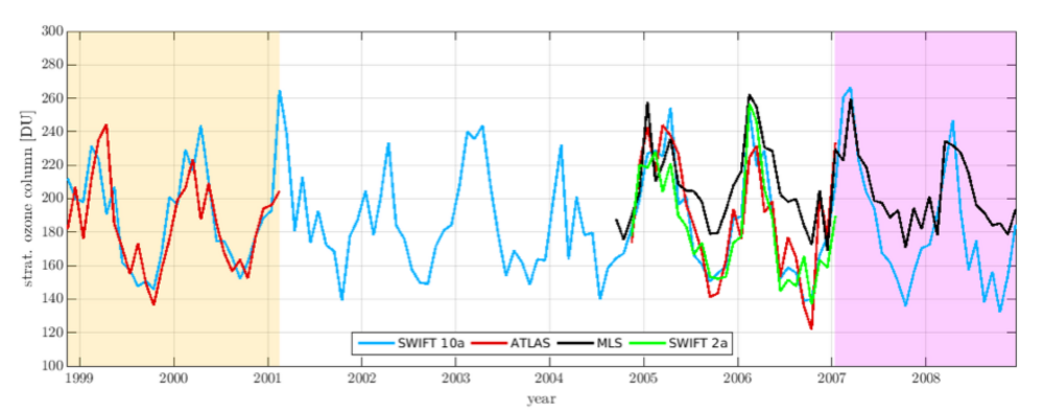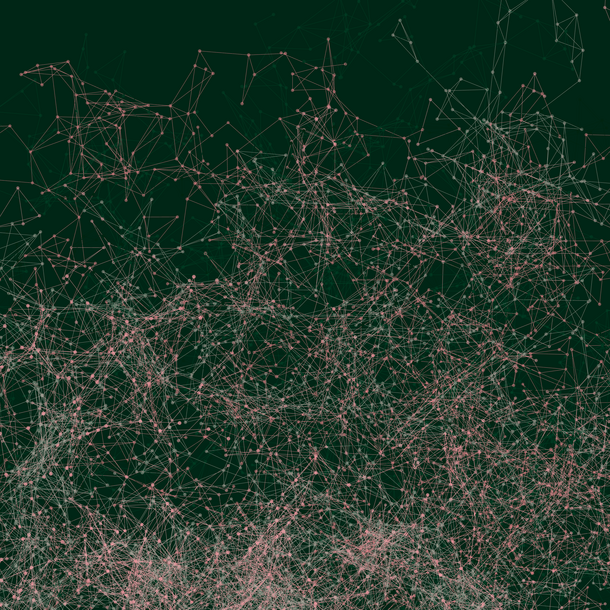Application of neural networks to chemical systems in earth system modelling
Doctoral Researcher:
Helge Mohn, Alfred Wegener Institute - Helmholtz Centre for Polar and Marine Research, helge.mohn@awi.de
Supervisors:
- Prof. Dr. Markus Rex, Head of Atmospheric Physics, Alfred Wegener Institute - Helmholtz Centre for Polar and Marine Research, Bremerhaven, Markus.rex@awi.de
- Dr. Daniel Kreyling, Alfred Wegener Institute - Helmholtz Centre for Polar and Marine Research, Bremerhaven, daniel.kreyling@awi.de
- Prof. Dr. Dr. h.c. Peter Maaß, Director of Center for Industrial Mathematics at University of Bremen, pmaass@math.uni-bremen.de
Location: Bremen / Potsdam
Disciplines: computer science, machine learning, atmospheric science
Keywords: atmospheric chemistry, machine learning, neural networks
Motivation: Today’s chemical models in earth system modelling are capable of detailed representation of physical and chemical processes in the corresponding domains. They contain hundreds of chemical species and even more reactions integrated into complex differential equation systems. Numerical solvers are used to solve the equation system, often requiring big computing clusters to handle the computational demands. Hence, the coupling of full chemistry models to climate models is generally not feasible, without significantly increasing the computation time of the climate model. However, the incorporation of detailed chemistry is often desirable, in order to account for various feedbacks between chemistry, atmosphere and ocean. One example of such a process is the interaction of the stratospheric ozone layer with the climate models atmosphere.
Aim: The development of the fast stratospheric ozone chemistry scheme, SWIFT, addresses this issue. The goal of SWIFT is to provide an interactive stratospheric ozone layer for global climate models without significantly increasing the computation time. The existing SWIFT model uses polynomial functions to approximate the rate of change of ozone. The training data for this approximation is taken from the stratospheric chemistry and transport model ATLAS. This PhD project aims to improve the existing methodology with a neural network approach. The neural network is potentially better suited to handle non-linearities in the rate of change of a chemical compound, where the polynomial function is too smooth to capture the roughness. The successful candidate will also investigate if the neural network is more sensitive to less frequently sampled realizations in the atmospheric training data. In certain regions of the parameter space, both aspect can lead to a better approximation of the target variable. One challenge lies with the optimization of the neural network, which needs to be complex enough to represent the chemical processes sufficiently while still being numerically efficient. For this optimization, a varying number of hidden layers and neurons per layer, different activation and loss functions and termination criteria will be tested. Regarding the numerical efficiency of the model, the project will also explore the possibilities to integrate parts of the chemical differential equation system into the neural network. Additionally the candidate will explore how to apply the advanced setup to the oceanic iron chemistry in marine biogeochemistry modelling. In cooperation with the modelers of the marine biogeoscience section in AWI Bremerhaven the candidate will investigate suitable pathways for our methodology to be implemented.
Objectives: (1) Train and optimize a neural network for the stratospheric rate of change of ozone, (2) validate model and compare results to existing approach, (3) explore the potential of applying the neural network approach to oceanic iron chemistry in marine biogeochemistry models.

References:
- Kreyling, D., I. Wohltmann, R. Lehmann, and M. Rex. “The Extrapolar SWIFT Model (Version 1.0): Fast Stratospheric Ozone Chemistry for Global Climate Models.” Geosci. Model Dev. 11, no. 2 (2018): 753–69. https://doi.org/10.5194/gmd-11-753-2018.
- Nowack, Peer J., N. Luke Abraham, Amanda C. Maycock, Peter Braesicke, Jonathan M. Gregory, Manoj M. Joshi, Annette Osprey, and John A. Pyle. “A Large Ozone-Circulation Feedback and Its Implications for Global Warming Assessments.” Nature Climate Change 5, no. 1 (2014): 41–45. https://doi.org/10.1038/nclimate2451.
- Thompson, David W. J., and Susan Solomon. “Interpretation of Recent Southern Hemisphere Climate Change.” Science 296, no. 5569 (2002): 895–899. https://doi.org/10.1126/science.1069270.
- Wohltmann, I., R. Lehmann, and M. Rex. “Update of the Polar SWIFT Model for Polar Stratospheric Ozone Loss (Polar SWIFT Version 2).” Geosci. Model Dev. 10, no. 7 (2017): 2671–89. https://doi.org/10.5194/gmd-10-2671-2017.
- Wohltmann, I., R. Lehmann, and M. Rex. “The Lagrangian Chemistry and Transport Model ATLAS: Simulation and Validation of Stratospheric Chemistry and Ozone Loss in the Winter 1999/2000.” Geosci. Model Dev. 3, no. 2 (2010): 585–601. https://doi.org/10.5194/gmd-3-585-2010.








